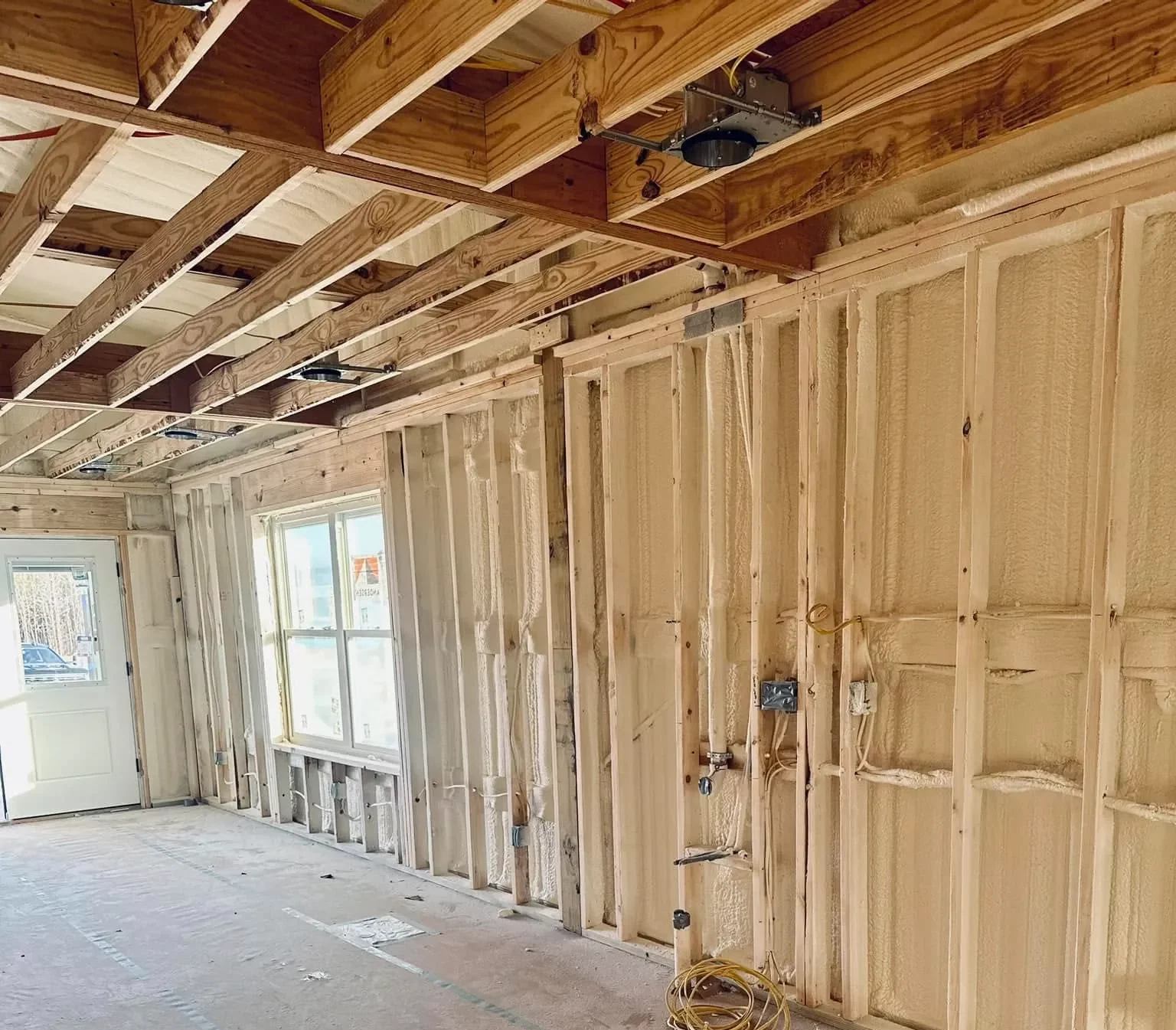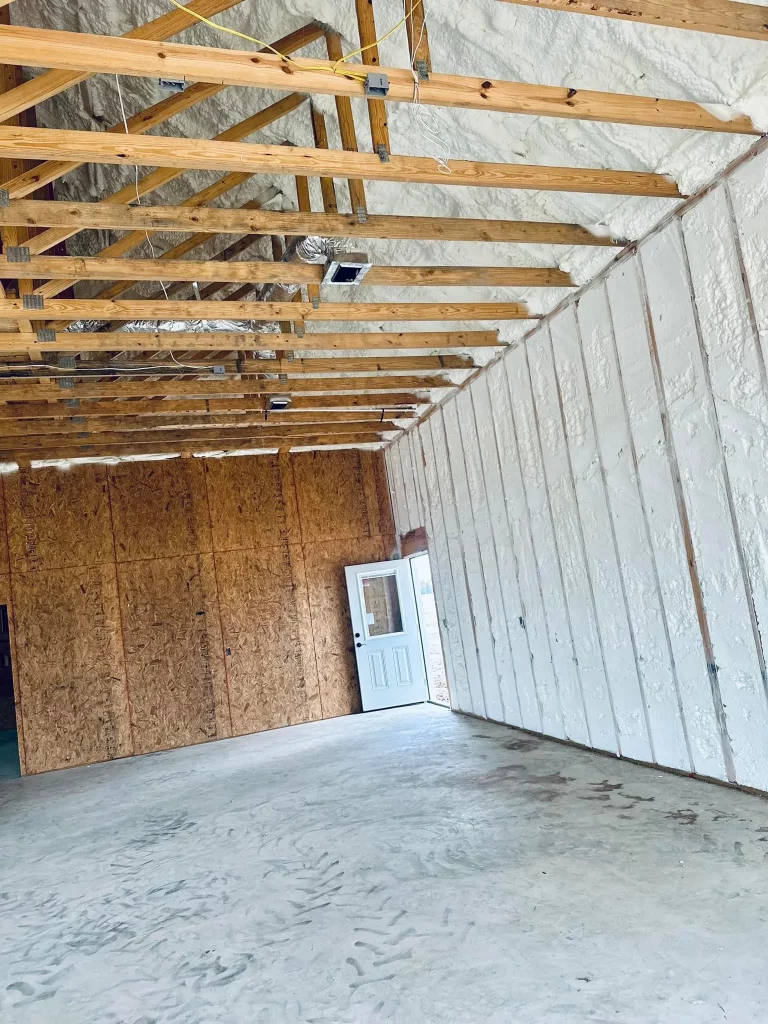
Proper residential insulation creates a thermal barrier that controls temperature differentials and prevents condensation formation, directly reducing conditions that promote mold growth. Quality insulation systems regulate humidity levels by maintaining consistent indoor temperatures and eliminating cold surfaces where moisture accumulates.
Effective moisture control through insulation depends on selecting appropriate materials, ensuring proper installation, and maintaining vapor barrier integrity. Based on extensive field experience with moisture-related issues in residential properties, the combination of thermal performance and moisture management determines long-term success in preventing mold problems.
Temperature variations create condensation when warm, humid air contacts cold surfaces. Inadequate insulation allows exterior temperatures to penetrate interior spaces, creating these problematic temperature differentials throughout wall cavities, attics, and basement areas.
Bonus Tip: Installing insulation with proper R-values for your climate zone eliminates the temperature differential that causes condensation, but gaps as small as 1% can reduce effectiveness by up to 25%.
Thermal bridges occur where building materials with high thermal conductivity bypass insulation systems. These areas become cold spots during winter months, attracting moisture that condenses and creates ideal mold growth conditions. Metal studs, concrete blocks, and uninsulated framing members commonly create these problematic pathways.
Continuous insulation systems address thermal bridging by maintaining consistent thermal barriers across building envelopes. According to the Department of Energy, proper continuous insulation reduces energy consumption by 5-15% while eliminating moisture accumulation points that lead to mold formation.
Different insulation materials offer varying levels of moisture resistance and vapor permeability. Understanding these characteristics helps determine optimal solutions for specific moisture control applications.
| Insulation Type | Moisture Resistance | Vapor Permeability | Mold Prevention Rating |
|---|---|---|---|
| Closed-Cell Spray Foam | Excellent | Very Low (0.8-1.2 perms) | Excellent |
| Open-Cell Spray Foam | Good | High (15+ perms) | Good |
| Fiberglass Batts | Poor | High (varies) | Poor |
| Mineral Wool | Fair | Moderate (2-7 perms) | Fair |
| Rigid Foam Boards | Excellent | Very Low (0.4-1.5 perms) | Excellent |
Vapor barriers control moisture movement through building assemblies by restricting water vapor transmission. Proper placement depends on climate conditions and building design. Cold climates require interior vapor barriers, while warm, humid climates may need exterior vapor retarders.
Technical Specifications for Vapor Control
| Climate Zone | Vapor Barrier Location | Required Perm Rating | Installation Method |
|---|---|---|---|
| Cold (Zones 6-8) | Interior Side | < 1.0 perm | Continuous, sealed joints |
| Mixed (Zones 4-5) | Interior Side | 1.0-10 perms | Variable, climate-specific |
| Hot-Humid (Zones 1-3) | Exterior Side | > 10 perms | Breathable materials |
Air leakage carries moisture-laden air into building cavities where it condenses on cool surfaces. The Environmental Protection Agency reports that air sealing can reduce moisture infiltration by up to 40%, significantly decreasing mold risk.
Critical air sealing locations include electrical penetrations, plumbing chases, HVAC ductwork connections, and structural joints. These areas require specific sealing materials designed for long-term performance under varying temperature and humidity conditions.
Effective air barriers combine multiple components working together to prevent unwanted air movement. Building wrap, sealants, gaskets, and continuous insulation materials create integrated systems that control both thermal performance and moisture infiltration.
Bonus Tip: Testing air leakage with blower door equipment reveals hidden pathways that standard visual inspections miss, allowing targeted sealing of problem areas before moisture issues develop.
Climate-specific moisture management strategies address local environmental conditions that affect insulation performance. High humidity regions require different approaches than arid climates or areas with extreme temperature variations.
The Building Science Corporation indicates that moisture management strategies must account for average relative humidity levels, seasonal temperature swings, and prevailing wind patterns. These factors determine optimal insulation placement, material selection, and vapor control strategies.
Foundation areas present unique moisture challenges due to ground contact and potential water infiltration. Proper foundation insulation prevents condensation while managing potential liquid water issues through integrated drainage systems.
Continuous exterior insulation on foundation walls eliminates thermal bridging through concrete and masonry materials. Interior insulation systems require careful moisture management to prevent trapped moisture between insulation and foundation walls.

LMC Insulation, LLC provides specialized solutions addressing moisture control through proper insulation techniques. Professional installation ensures optimal performance and long-term moisture management.
Specialized Services Include:
Existing moisture problems require remediation before installing new insulation systems. Hidden moisture damage, inadequate ventilation, and structural issues must be addressed to ensure long-term success of insulation-based moisture control strategies.
Building age, construction methods, and previous renovation work affect optimal insulation approaches. Older homes may require additional air sealing work, while newer construction might need upgraded vapor control systems to meet current moisture management standards.
Bonus Tip: Moisture meters can detect hidden moisture in wall cavities and structural materials before insulation installation, preventing encapsulation of existing moisture problems that lead to mold growth.
Professional assessment identifies specific moisture sources, including roof leaks, plumbing issues, inadequate drainage, and HVAC system problems. Addressing these root causes prevents recurring moisture issues regardless of insulation quality.
Yes, moldy insulation requires complete removal and remediation of underlying moisture sources before installing new materials.
Proper R-values prevent condensation formation, but excessive thickness without proper vapor control can trap moisture in building cavities.
Spray foam provides excellent moisture control when properly installed, but exterior water intrusion and plumbing leaks require separate solutions.
Successful moisture control through insulation requires integrated approaches combining thermal barriers, air sealing, and vapor control systems. Material selection must match climate conditions and building characteristics to prevent long-term moisture accumulation.
Professional installation ensures proper techniques that maintain moisture control effectiveness over time. Regular maintenance and prompt attention to potential issues prevent minor problems from developing into major moisture and mold concerns.
Effective moisture prevention requires expert assessment of your specific building conditions and climate factors. Professional evaluation identifies optimal insulation strategies that address both thermal performance and long-term moisture management needs.
Contact LMC Insulation, LLC at [email protected] or (479) 351-6175 for comprehensive moisture control solutions tailored to your property’s specific requirements and regional climate conditions.
Quality insulation materials maintain moisture control properties for 20-30 years when properly installed and maintained. Regular inspections help identify potential issues before moisture problems develop.
Annual visual inspections of accessible areas, monitoring indoor humidity levels, and prompt repair of any air barrier damage maintain long-term moisture control effectiveness.
HVAC modifications can alter pressure relationships and humidity levels within buildings. Proper load calculations and ductwork sealing maintain moisture control when systems are upgraded.
Insulation prevents condensation formation, but mechanical ventilation remains necessary to control indoor humidity levels and maintain healthy indoor air quality.
Visible condensation on windows or walls, musty odors, increased energy costs, and elevated indoor humidity levels suggest moisture control problems requiring professional evaluation.